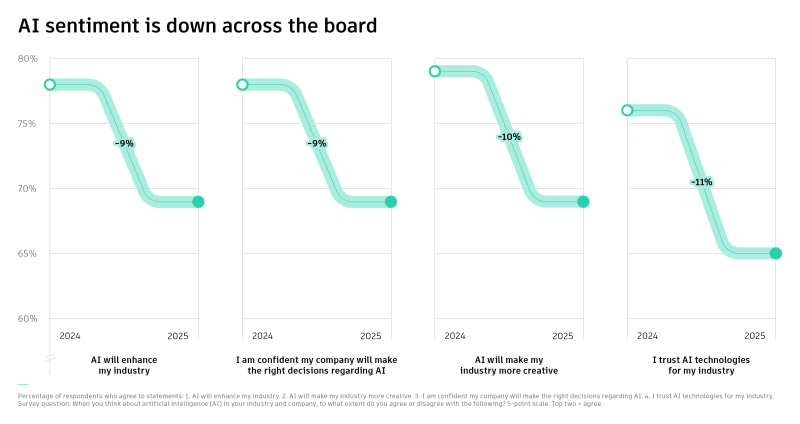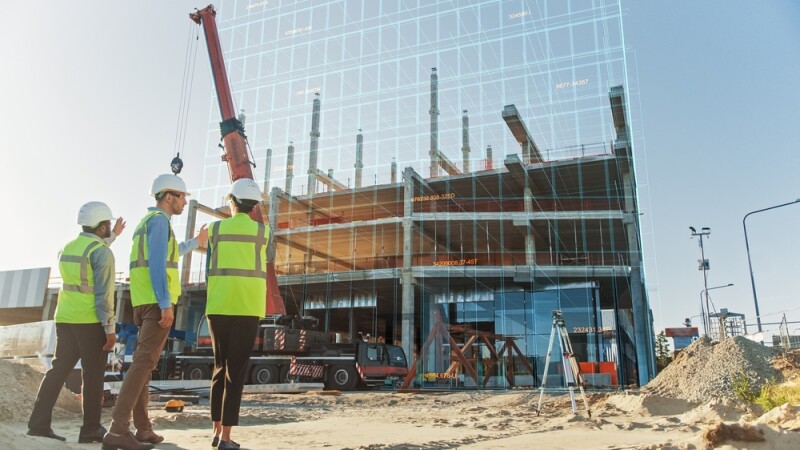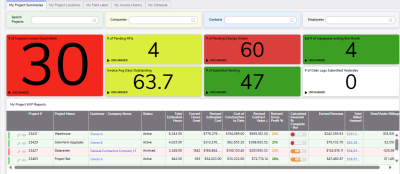We talk a lot at Geo Week News about the positive trends around the AEC industry, and there are certainly plenty of them. Demand for work around the world at all levels, and particularly for large infrastructure projects, and technology is both evolving rapidly to address efficiency issues throughout the industry and, crucially, being adopted at higher rates than ever before. However, the industry is certainly not all rosy right now, for some reasons we’ve mentioned and others not as much. We know, for example, that skilled worker shortages are hurting organizations trying to take advantage of this growing demand, but we might not speak as much about growing supply chain issues adding complications to workflows, or the overall global economic uncertainty clouding the entire industry.
Those positives and negatives were captured in the annual State of Design & Make Report put out by Autodesk, the 2025 edition of which was released this week. This report doesn’t only consider the AEC industry, to be clear, but rather all three sectors covered by Autodesk’s software, including AECO in addition to Design and Manufacturing (D&M) and Media and Entertainment (M&E). There were a lot of interesting takeaways from this 96-page report, but below you can find a few of the biggest takeaways I had reading it in full.
Before we get into those takeaways, though, it’s worth pointing out some of the methodology behind the report to add some important context to the findings. For instance, the report includes insights from 5,594 industry leaders, with a bit over a third (35 percent) coming from the AECO industry, and almost exactly a third (34 percent) indicating they primarily use Autodesk products. It’s worth pointing out as well that these interviews took place between May and August of 2024 – an important note given some of the evolving economic and geopolitical uncertainty around the world since then – and that 68 percent of respondents are described as “decision-makers.”
Getting into some of the takeaways, in my read of the report, the primary theme that stood out to me was the evolving perception of artificial intelligence throughout the industry. To get right to the point, enthusiasm around AI is down, and concern around its potential negative impact on the industry is up. To be fair, that’s not the same thing as saying there is little enthusiasm around AI – just under 70 percent of respondents still indicate that AI will “enhance their industry.” However, that number is down nine percent compared to last year.
On the flip side, just about half (48 percent) of respondents agree that AI will destabilize their industry, up from 41 percent last year. That number is even higher (56 percent) among digitally mature companies, defined by Autodesk as companies that are approaching or have achieved the goal of their digital transformation journey. As they point out in the report, this correlation makes sense as these companies, by definition, have more experience with the technology and have a head start in seeing some of the impacts.
The reasons for this relative lack of enthusiasm vary, and part of it is just the typical cycle that technology goes through, where extreme hype is often followed by distrust and skepticism. Specifically with AI, though, some of the big reasons for the decline in positivity include concern about cybersecurity and privacy, as well as “limited control over how, where, and when their data is used.” For the AEC industry specifically, the utilities and telecom sector indicates the lowest levels of concern about AI destabilizing their industry, while civil infrastructure owners share the most of that concern. Interestingly, that latter category also has among the highest levels of confidence that AI will enhance their industry, indicating a belief that AI could wholly change the space.

Another major focus of this year’s report was around sustainability, where respondents indicated that sustainability remains a major factor in decision making for their organizations, but for changing reasons. They mention that today, sustainability is “crucial for future business growth in the next three years,” pointing more toward business value rather than stakeholder pressure for embracing sustainability, a stark change from previous iterations of this report. It would be interesting to see if these numbers are still the same since these interviews were held, as some sentiments around environmental practices have changed in the last six months in some parts of the world.
The report also tied these two key areas, AI and sustainability, with many respondents pointing to AI as a key driver of sustainable practices. In fact, when asked what change their company or organization has made to be more sustainable, using AI was the number one response for the second year in a row. These systems’ ability to simulate potential outcomes, analyze vast amounts of data to optimize practices, and visualize things like flood impacts makes sense for addressing sustainability concerns.
That being said, as we’ve pointed out here at Geo Week News in the past and as Autodesk does indeed point out in this year’s report, many of these AI technologies require vast amounts of energy to run, which, of course, runs contrary to sustainability goals. That’s not to say AI can’t or shouldn’t be part of these conversations, but that push-and-pull relationship is important to acknowledge.
The final takeaway from this year’s report gets back to the talking point this industry has been dealing with for decades at this point: How they can begin to adopt and implement more technology within their workflows. As alluded to at the top of this article, this issue has become lessened over the last decade or so, but there is still digital transformation, as Autodesk refers to it as, to be had. They point out that these so-called digitally mature companies are seeing real benefits – 30 percent more likely to have experienced above average or exceptional performance, 29 percent more likely to be prepared for the future, etc. – but getting to that point still has barriers.
Two of those barriers stand out the most as being significant. One, of course, is cost, and that has become more of a barrier since the previous iteration of this report, up from about 35 percent in 2024 to almost 45 percent this year. That gets back to the supply chain problems mentioned above and overall economic uncertainty around the world. And of course, that in turn points to the importance of this digital adoption since the companies that have matured digitally are better able to deal with unpredictability, generally speaking.
There’s also the issue of time, which is something that is coming up more and more in my own conversations with leaders and professionals throughout the AEC industry. It’s not as simple as just deciding technology is good and adopting it. For one, there is a vetting process that goes into initially adopting these tools, which requires both time and money. Then there’s also the time needed to train employees on these tools, as there’s no real value in having a technology if nobody knows how to use it. With the increased demand for this industry and the shrinking workforce, that leaves less time than ever to actually complete that training. Getting over that hump is easier said than done, but the most successful companies will figure out a way, even if it means turning down more projects in the short-term to achieve that long-term efficiency gain.
To end, I’ll leave you with this quote in the report from Dr. Max Clar, Senior Vice President, EMEA CTO & Sector Manager with Parsons.
“The biggest barrier to digital transformation is time. We have so many projects, so many client demands to design quickly and yesterday. The speed of change is rapid. Enabling our staff to have enough time to be trained and be familiar and ensure the adoption is key. I find it’s not the willingness of staff—it’s the availability of staff.”






